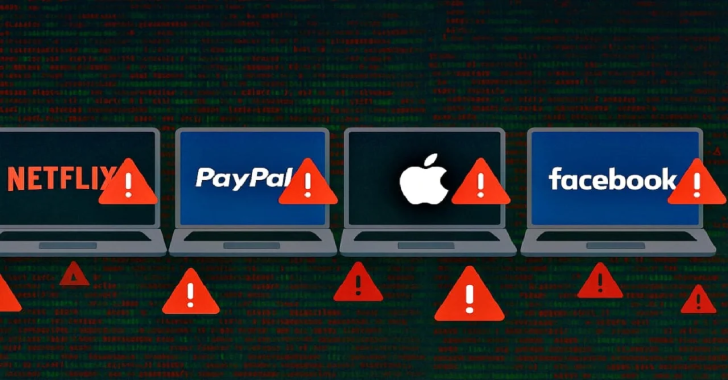Introduction
Welcome to the dark side of the internet. No, seriously. The online world is incredible, but lurking behind every click could be a digital predator. Cyber attacks are not just a problem for big companies or tech nerds, they’re something everyone should care about. If you’ve ever clicked a suspicious link or used the same password on multiple sites, this guide is for you.
Let’s dive into the murky waters of cybercrime and uncover the most common and dangerous cyberattacks you must watch out for.
Common Types of Cyber Attacks
Malware Attacks
Malware is short for “malicious software.” These programs are designed to infiltrate your system and cause damage or steal data. Think of it as a virus for your computer.
Viruses
Like a flu virus, computer viruses attach themselves to clean files and spread. Once activated, they can delete files, slow down your system, or crash it completely.
Worms
Unlike viruses, worms don’t need to attach themselves to a program. They can spread all by themselves through networks and cause havoc by overloading systems.
Trojans
Named after the infamous Trojan Horse, Trojans trick users into installing them by disguising as legit software. Once inside, they can steal sensitive data or open backdoors for other malware.
Ransomware
This one’s scary. Ransomware locks your files and demands payment (usually in cryptocurrency) to release them. Pay up, and you might get your data back. Or not.
Phishing Attacks
Phishing is like fishing, but instead of fish, hackers are after your personal info.
Email Phishing
The most common form. You get an email that looks like it’s from your bank or Netflix, asking you to click a link and enter your password. Bam, you’ve been hooked.
Spear Phishing
More targeted than regular phishing. The hacker does their homework and sends a convincing email that looks personal. They might even know your name or where you work.
Whaling
This one targets the big fish CEOs, CFOs, and other high-level execs. The stakes (and rewards) are much higher.
Denial-of-Service (DoS) and Distributed Denial-of-Service (DDoS)
These attacks flood a website or server with so much traffic that it crashes. A DDoS attack uses multiple systems to amplify the assault. It’s like 10,000 people trying to enter a single door at once, chaos.
Man-in-the-Middle (MitM) Attacks
Imagine you’re whispering a secret to your friend, and someone in the middle hears everything without you knowing. That’s what a MitM attack does in the digital world: it intercepts communication between two parties.
SQL Injection
Hackers use SQL Injection to exploit vulnerabilities in a website’s database. By inserting malicious SQL commands into forms or URLs, they can steal, alter, or even delete data.
Zero-Day Exploits
These attacks occur the same day a software vulnerability is discovered, before developers can fix it. It’s like finding out your front door lock is broken right as someone tries to break in.
Cross-Site Scripting (XSS)
In XSS attacks, malicious scripts are injected into websites. When users interact with those sites, the scripts run and steal data, like cookies or session info.
Credential Stuffing
This attack uses stolen usernames and passwords from one breach to try and access accounts on other platforms. It works surprisingly often because people reuse passwords.
Drive-by Downloads
These sneaky downloads happen without your consent; just visiting a compromised site is enough to infect your system with malware.
Emerging and Advanced Threats
Advanced Persistent Threats (APTs)
APTs are like digital ninjas. They silently enter a network and stay hidden for months, spying and stealing data without being noticed.
IoT-Based Attacks
With more smart devices like thermostats, TVs, and fridges online, hackers are targeting these gadgets to get into bigger networks. Your smart fridge could be spying on you. Creepy, right?
AI-Powered Attacks
Hackers are now using AI to make attacks smarter and more convincing, especially for phishing or automated intrusion attempts.
The Impact of Cyber Attacks
Financial Loss
Cyber attacks can cost companies millions. Even individuals can lose big if bank info or credit cards are stolen.
Data Theft and Breach of Privacy
From private messages to medical records, once your data is out, it’s out. And you can’t just “change” your data like a password.
Reputational Damage
No one wants to do business with a company that can’t keep its info safe. A breach can seriously hurt your credibility.
How to Prevent Cyber Attacks
Basic Cyber Hygiene
Use strong passwords, don’t click on sketchy links, and avoid using public Wi-Fi for sensitive stuff. Think of it as brushing your digital teeth.
Using Security Software
Install antivirus and firewall software. It’s your first line of defense against malware and suspicious behavior.
Keeping Systems Updated
Patches and updates often include security fixes. Don’t ignore those update reminders — they’re trying to protect you.
Practicing Good Password Habits
Use a different password for every account. Better yet, use a password manager to keep track. And always enable two-factor authentication.
Conclusion
Cyber attacks are everywhere, and they’re not going away anytime soon. But that doesn’t mean you have to live in fear. With a little knowledge and the right tools, you can outsmart the hackers and protect your digital life. Stay alert, stay updated, and remember — in the world of cybercrime, awareness is your best defense.
FAQs
What is the most dangerous type of cyber attack?
Ransomware is currently one of the most dangerous, as it can completely lock you out of your system and demand money for access.
How do I know if I’ve been hacked?
Signs include unfamiliar logins, slow device performance, unknown apps installed, or locked files demanding ransom.
Can antivirus software stop all cyber attacks?
No, but it’s a strong first layer of defense. It’s best when combined with good security practices.
Are smartphones vulnerable to cyber attacks?
Absolutely. Phones can be infected through apps, phishing messages, or unsecured networks.











1 Comment
[…] cyberattack that doesn’t require any user interaction, it infects the device automatically through bugs […]